Bluefin Tuna

Kite & Balloon!
The Evolution of Kite Fishing: Catching Blue Fin Tuna with Frozen Flying Fish
In recent years, kite fishing with frozen flying fish has emerged as the number one way to catch blue fin tuna. This technique has revolutionized the way anglers target these prized game fish, and for good reason. By using a kite to suspend a frozen flying fish above the water's surface, anglers can present a tantalizing bait to blue fin tuna without being detected.
The Science Behind Kite Fishing
Blue fin tuna are notorious for their exceptional eyesight and ability to detect even the slightest vibrations in the water. Traditional fishing methods, such as trolling or casting, often rely on presenting a lure or bait in a way that can be seen or heard by the tuna. However, kite fishing with frozen flying fish offers a unique advantage. By suspending the bait above the water's surface, anglers can present a natural-looking food source to the tuna without alerting them to the presence of the boat.
The Benefits of Kite Fishing
There are several benefits to kite fishing with frozen flying fish:
- Reduced visibility: By dropping the bait upwind and far away from the boat, anglers can avoid spooking the tuna with the boat's presence.
- Increased stealth: The kite allows anglers to present the bait without making a sound, reducing the likelihood of scaring off the tuna.
- Natural presentation: Frozen flying fish are a natural food source for blue fin tuna, and the kite allows anglers to present them in a way that mimics their natural behavior.
The Irresistible Appeal of Frozen Flying Fish
Blue fin tuna are highly attracted to flying fish, and the use of frozen flying fish as bait has proven to be incredibly effective. The frozen fish are typically thawed and then attached to a hook, which is then suspended from the kite. When a tuna bites, the kite is designed to release the line, allowing the angler to set the hook and reel in the catch.
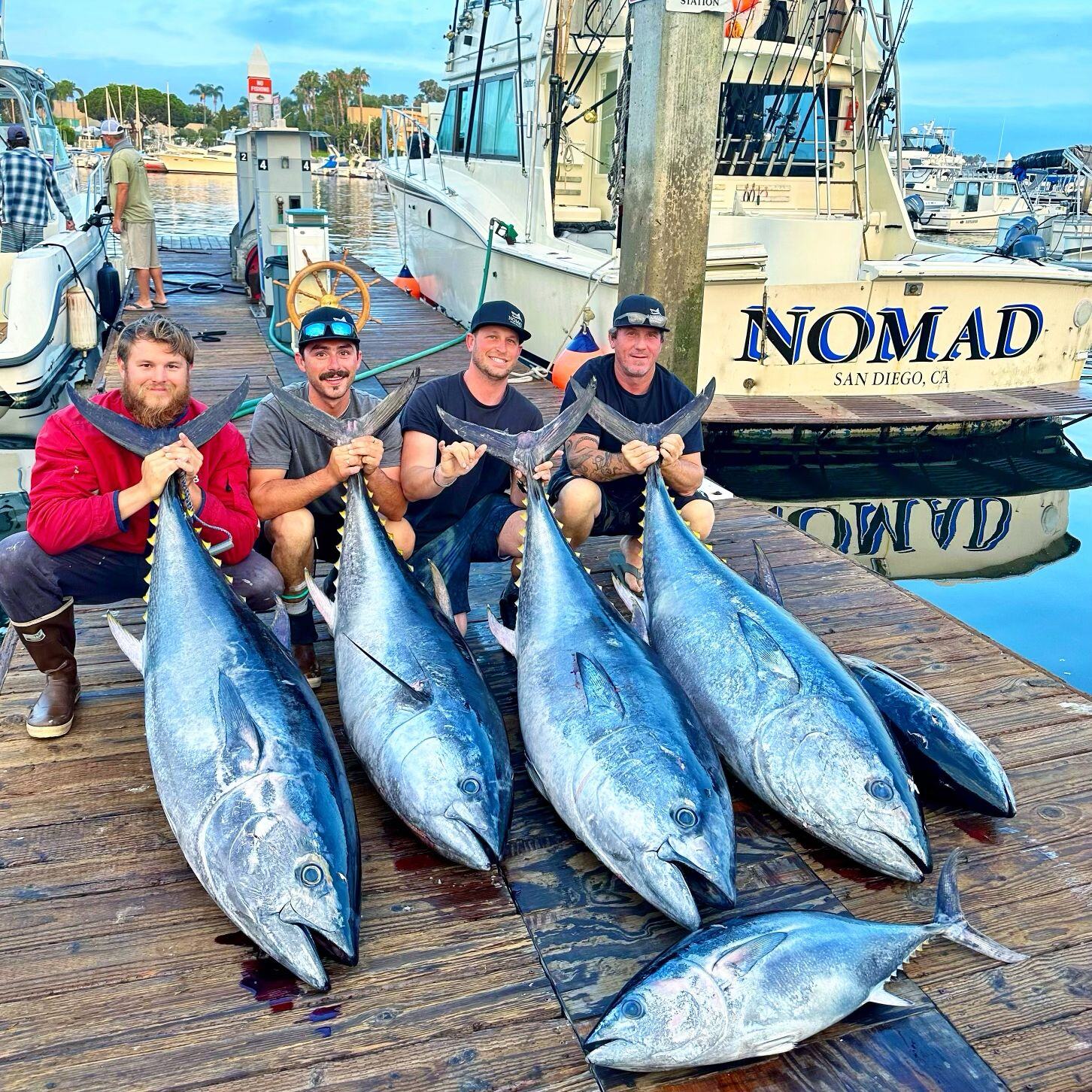
Every blue fin tuna specific trip we offer affords our customers with this option!
Bluefin are a seasonal species.
Timing is Everything
The good news for anglers is that Bluefin Tuna can be caught in San Diego waters for most of the year. However, to maximize your chances of landing a trophy catch, it's essential to time your trip during the peak fishing seasons.
Understanding the Migration Patterns
Bluefin Tuna migration patterns in San Diego are influenced by water temperatures and weather conditions. While it's difficult to predict with certainty, historical data suggests that the high season for Bluefin Tuna fishing in San Diego typically falls between July and September. During this period, the ocean conditions are usually ideal, and the tuna are more active. On the other hand, the low season typically occurs from January to May, when the water temperatures are cooler, and the tuna are less active.
But Remember, Bluefin Tuna Don't Follow a Calendar!
While these general guidelines can help you plan your trip, it's essential to keep in mind that Bluefin Tuna are unpredictable creatures. They don't follow a calendar, and their migration patterns can vary from year to year. It's not uncommon for them to show up early or stay late, so it's crucial to stay flexible and be prepared for unexpected opportunities.
Keep in mind that this is just a general guideline, and the actual fishing conditions can vary from year to year. Be sure to check with local fishing reports and experts for the most up-to-date information before planning your trip.
By timing your trip during the peak fishing seasons and staying flexible, you'll increase your chances of landing a trophy Bluefin Tuna in San Diego waters.
Pursuing the Elusive Pacific Bluefin Tuna
The Pacific Bluefin tuna is a legendary sport fish, renowned for its incredible strength and tenacity. For many anglers, catching one is a lifelong dream, but it's a challenge that requires skill, strategy, and a healthy dose of luck. Even the most seasoned anglers struggle to land these magnificent creatures, which can range in size from 40 to 300 pounds.
The battle is intense, with bluefin tuna putting up a fight that can last for hours. Their brute strength and determination to survive are awe-inspiring, and it's not uncommon for them to wear through even the thickest fishing lines. Yet, for those who dare to take on the challenge, the thrill of reeling in a bluefin tuna is unparalleled.
Preparing for the Adventure
To increase your chances of success, it's essential to come prepared. A bluefin tuna fishing trip requires a significant investment of time, with the journey to the tuna grounds taking anywhere from two to five hours each way, depending on the time of year. The minimum trip duration is 12 hours, but this is only viable during peak season.
However, even during peak season, overnight and multiday charters offer the best overall chances of success. Bluefin tuna can be notoriously elusive, and even when you do find a school, they may be finicky or quickly disappear. Experience has shown that the last few hours of an extended charter often yield the most results.
Choosing the Right Trip
For those seeking the perfect balance between time and cost, our 1.5-day trip is a popular choice. However, for the truly dedicated angler, we also offer 2.5, 3.5, and longer trips that allow you to fully immerse yourself in the experience. When booking an overnight or multiday charter, consider adding the ".5" to the end of your trip. This allows you to stay out until sunset on the final day, increasing your chances of landing a trophy catch, and then travel back to shore under the cover of night.
Why the Extra Half Day Matters
By adding the extra half day to your trip, you'll gain a significant advantage in your pursuit of the Pacific Bluefin tuna. This allows you to:
- Stay out until sunset, when the tuna are often most active
- Increase your chances of landing a trophy catch
- Avoid the mid-day lull, when the tuna may be less active
- Travel back to shore under the cover of night, when the seas are often calmer
Don't miss out on the opportunity to experience the thrill of catching a Pacific Bluefin tuna. Book your trip today and get ready for the adventure of a lifetime!
619.508.7823
Human operators are standing by to answer your call on the first ring!
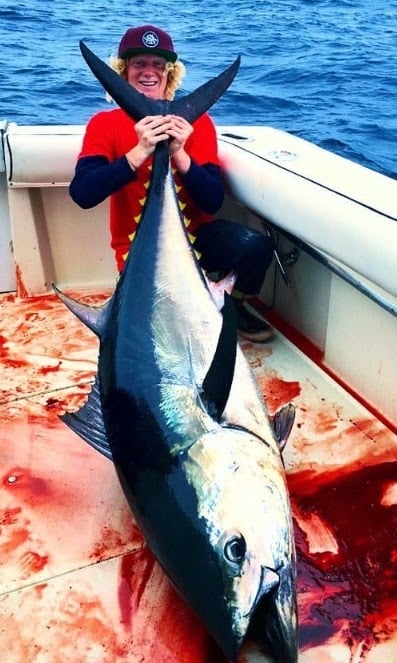
Bluefin Tuna Season
- Season: June to November, with peak season in July and August
- Migration Pattern: Bluefin tuna migrate from the warmer waters of Mexico to the cooler waters of San Diego during the summer months. They tend to congregate around the edges of the continental shelf, where the water is deeper and more nutrient-rich.
- Fishing Spots: Popular fishing spots for bluefin tuna in San Diego include the outer banks, the Coronado Islands, and the area around the 9 mile bank.
- Fishing Techniques: Bluefin tuna can be caught using a variety of techniques, including trolling, casting, and chunking. They are often targeted using lures such as jigs, spoons, and plugs.
- Size: Bluefin tuna typically range in size from 20 to 100 pounds, with some larger fish reaching up to 300 pounds.
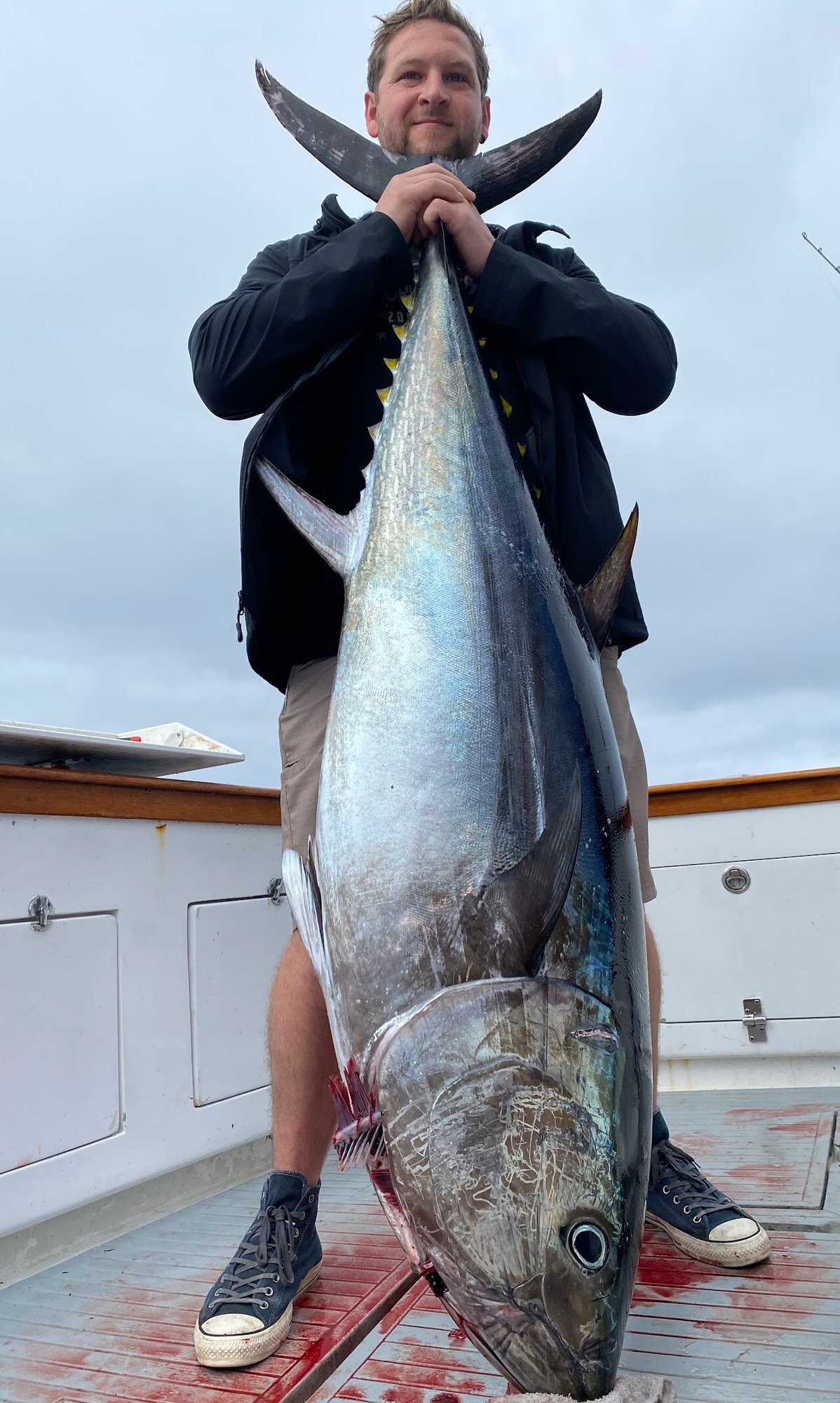
The bluefin tuna is a highly prized fish, renowned for its massive size, incredible strength, and thrilling fight. As a result, sport fishing for bluefin tuna has become a popular pastime among anglers. However, it's essential to remember that bluefin tuna are in danger of being overfished due to their high demand. To ensure the long-term sustainability of this species, it's crucial to be aware of the rules and regulations surrounding bluefin tuna fishing.
Current Bag Limits
As of now, the bag limit for Bluefin Tuna is two per angler per day. This means that each angler is allowed to catch and keep a maximum of two bluefin tuna per day. It's essential to note that bag limits can change, so it's crucial to stay up-to-date with the latest regulations.
Staying Informed
For the most current information on bluefin tuna bag limits and regulations, we recommend visiting the California Fish and Game Regulations Booklet for San Diego. This resource provides the latest information on fishing regulations, including bag limits, size limits, and closed areas.
Fishing for Bluefin Tuna Sustainably
To ensure the long-term sustainability of bluefin tuna populations, it's essential to practice responsible and sustainable fishing practices. Here are some tips to help you fish for bluefin tuna sustainably:
- Follow local regulations: Stay up-to-date with the latest bag limits, size limits, and closed areas to ensure you're not overfishing or harming the environment.
- Handle fish with care: Handle bluefin tuna gently and humanely to minimize injury and stress.
- Release undersized fish: Release any undersized bluefin tuna to allow them to grow and reproduce.
- Avoid bycatch: Use fishing gear and techniques that minimize bycatch (the catching of non-target species) to reduce waste and protect other marine life.
- Respect the environment: Avoid damaging marine habitats and ecosystems, and take all trash and waste with you when you leave.
By following these tips and staying informed about bluefin tuna regulations, you can help ensure the long-term sustainability of this incredible species.
Finding Bluefin on your charter with us.
At San Diego Tuna Fishing, we understand that finding Bluefin Tuna requires a combination of local knowledge, keen observation, and the right techniques. In this article, we'll share our expertise on how to locate and target these prized gamefish off the stunning coast of San Diego.
1. Bird Activity: A Telltale Sign of Tuna Presence
Birds can be your best friends when it comes to finding Bluefin Tuna. Keep a lookout for bird activity, especially when tuna are not visible from the boat. A spotter in the crow's nest or at the highest safe position on the vessel can be invaluable. When birds are diving and feeding on baitfish driven to the surface by tuna, it's a sure sign that action is nearby. Maintain a respectful distance to avoid spooking the fish, but be ready to cast or troll through the area once the birds have moved on.
2. Dolphin Sightings: A Key Indicator of Tuna Activity
Dolphins and tuna often go hand in hand. These playful marine mammals feed on the same baitfish as tuna, so keep an eye out for them. If you see dolphins herding baitfish or jumping high out of the water, there's a good chance tuna are in the vicinity. Approach with caution and observe the dolphins' behavior – they might just lead you straight to the tuna.
3. Kelp Patties: A Haven for Baitfish and Tuna
Kelp patties can be a magnet for baitfish and, consequently, Bluefin Tuna. These floating oases provide structure and cover for smaller organisms, which in turn attract larger baitfish. Tuna often lurk beneath kelp patties, so keep your boat a respectful distance away and use stealthy approaches to present your bait or lures to these hidden hunters.
4. Meter Marks and Sonar: The Power of Modern Technology
Modern technology plays a significant role in locating Bluefin Tuna. Using sonar and fish finders, you can identify meter marks – areas where large schools of baitfish or individual tuna appear on your screen. These marks often indicate the presence of tuna feeding at various depths. Dropping a marker and working the area thoroughly can lead to exciting encounters.
5. Shiner Schools and Boils: A Sign of Tuna Activity
Keep a lookout for schools of shiners (small fish) on the surface, as they are a favorite snack of Bluefin Tuna. When you see shiners boiling or jumping out of the water, it's a sign that something is driving them upwards, and that something could very well be hungry tuna. Approach these areas quietly, as tuna can be spooked by loud engine noises.
6. Foamers: A Visual Indicator of Tuna Feeding
Foamers, created by feeding tuna pushing bait to the surface, are a well-known indicator of tuna activity. If you spot foamers, maintain a good distance from the action to avoid spooking the fish.
By combining these techniques and staying alert, you'll increase your chances of locating and landing a giant Bluefin Tuna off the coast of San Diego. Remember to always respect the fish and the environment, and to follow local regulations and guidelines to ensure a sustainable and enjoyable fishing experience.
7. Radio: Our fleet is huge and we work together.
Every boat in our fleet works together to find the fish and put them on the deck for you.
7 Day Cancel
Book Online
Human Help
Methods and Means
Kite Fishing
Kite fishing is a highly effective technique for targeting trophy tuna and other pelagic predators. By deploying live or dead baits using kites, anglers can present their offerings above the surface, where they're more likely to be seen by feeding fish. This method is particularly useful when drifting over underwater structure or schools of feeding fish, as it allows the bait to move naturally and attract the attention of predators.
.jpeg)
Kite fishing is often used in conjunction with frozen flying fish, which are a favorite snack of bluefin tuna. By suspending the flying fish above the surface, anglers can create the illusion of a injured baitfish, which is irresistible to hungry tuna. This technique requires patience and skill, but the rewards can be substantial, with trophy catches of 200 pounds or more not uncommon.
Throwing Iron
Throwing iron is a proactive technique that involves casting metal jigs off the bow of the boat, often at a distance from the target area. This method is designed to attract the first fish and start the frenzy, which can then be followed up with other techniques like live bait or kite fishing.
Throwing iron is a high-energy technique that requires a strong arm and good casting skills. However, when done correctly, it can be an extremely effective way to get the attention of feeding fish and start a bite.
Live Bait
Live bait drift fishing is a natural and effective way to catch large species like yellowtail and dorado. By deploying live baitfish, such as sardines or anchovies, anglers can create a realistic presentation that mimics the natural movement and behavior of these baitfish.
This technique involves drifting over known feeding areas, allowing the live bait to move naturally and trigger bites from predators. Live bait drift fishing is a patient approach that requires a good understanding of the local fishing grounds and the behavior of the target species.
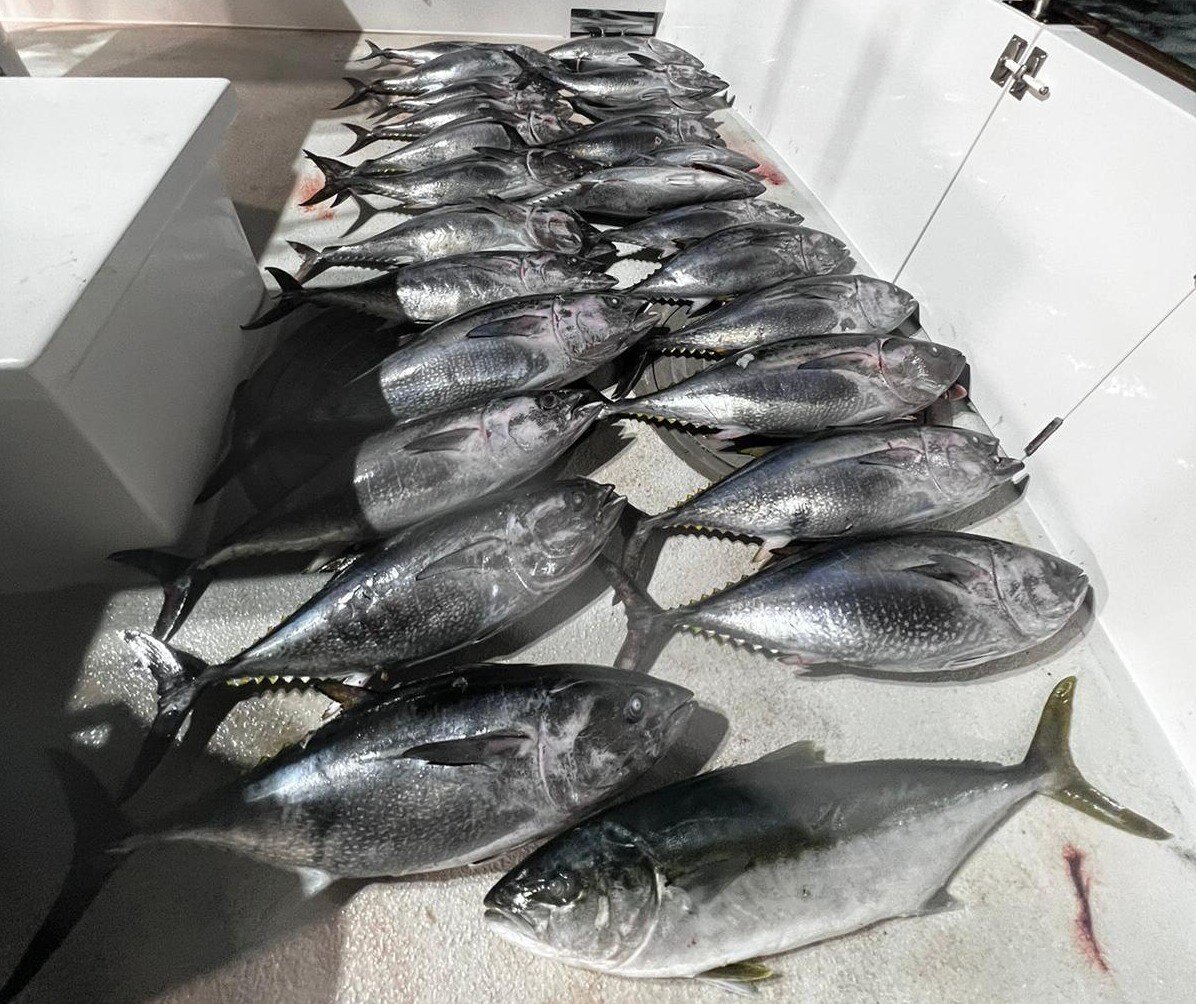
Slow Trolling
Slow trolling is a patient and deliberate approach to targeting migratory species like bluefin tuna. By trolling lures or live bait at a slow pace, anglers can create a presentation that mimics the natural movement and behavior of these species.
Slow trolling requires a good understanding of the local fishing grounds and the behavior of the target species. It also requires patience and persistence, as the payoff can be slow in coming. However, when done correctly, slow trolling can be an extremely effective way to catch trophy-sized fish.
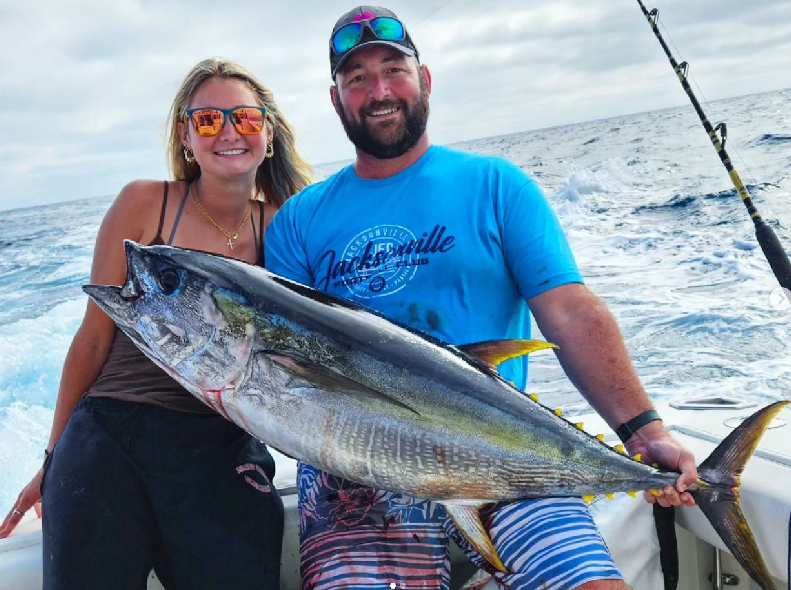
Yo-Yo Ironing
Yo-yo ironing, also known as the flat fall, is a high-energy technique that involves using metal jigs called "iron" to cover water quickly while maintaining contact with bottom structure. This method is ideal for targeting aggressive fish like yellowtail and tuna, which are drawn to the rapid movement and flash of the iron.
By rapidly dropping the iron to the bottom and then retrieving it, anglers can create a reaction strike from these predators.
The flat fall is a versatile technique that can be used in a variety of situations, from targeting specific species to exploring new fishing grounds. By adjusting the weight and size of the iron, anglers can tailor their presentation to the specific fishing conditions and target species.
Where the Tuna Are!
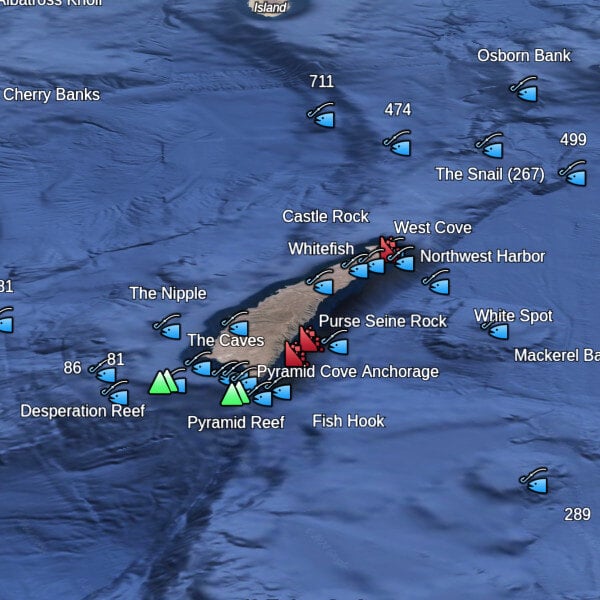
San Clemente Island.
If you want massive blue fin, this is one of, if not the MOST productive spot on the entire map. This place is almost always holding tuna. Most of our overnight and multiday trips start here. The backside is known for pre-dawn jig bites, and this is a lunching spot for the other nearby banks. During summer months is best.
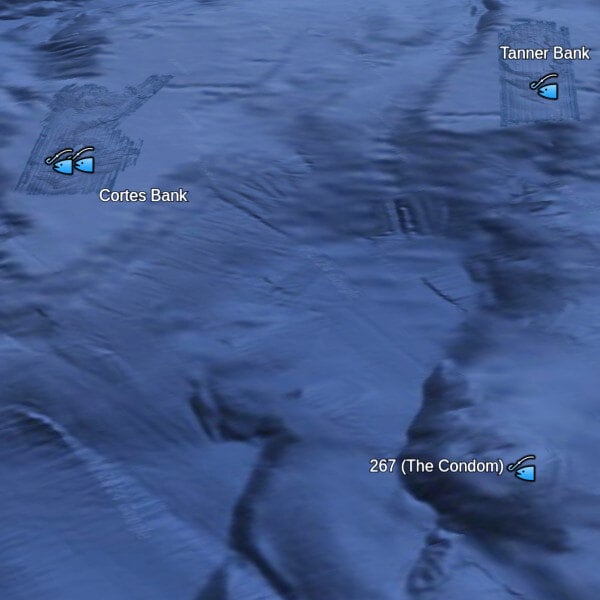
Tanner & Cortez Banks.
These two spots represent the far end of a 1.5 day overnight trip, and is a common destination for all long range trips we offer. These banks come very close to the surface, even causing surfable waves at times.
The underwater structure attracts all types of large pelagic predators, which is exactly what we are looking for.
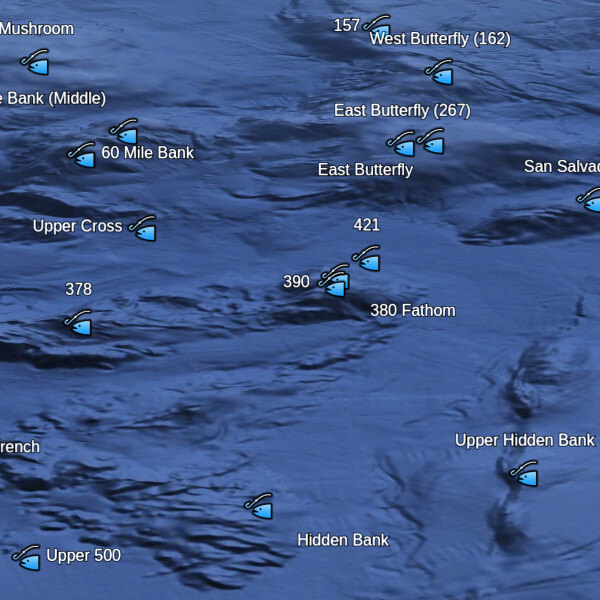
Mexican Outer Banks.
Mexican international waters means no passport for these multiday trips. Enjoy the outright crazy fishing on any of these deep banks that are south and south west of San Clemente island. Home of giant blue fin, yellow fin, and Dorado, you will likely find that you are one of only few boats fishing the unpressured spot.
Migration Patterns
- Summer: During the summer months, bluefin tuna migrate from the warmer waters of Mexico to the cooler waters of San Diego. They tend to congregate around the edges of the continental shelf, where the water is deeper and more nutrient-rich.
- Fall: During the fall months, bluefin tuna begin to migrate back to the warmer waters of Mexico. They tend to congregate around the same areas as during the summer months, but may be more scattered.
- Winter: During the winter months, bluefin tuna are less common in San Diego waters. They may still be found in some areas, but are generally less abundant than during the summer and fall months.
- Spring: During the spring months, bluefin tuna begin to migrate back to San Diego waters. They tend to congregate around the same areas as during the summer months, and can be targeted using a variety of techniques.
Fishing Conditions
- Water Temperature: Bluefin tuna prefer water temperatures between 60°F and 70°F.
- Water Depth: Bluefin tuna can be found in water depths ranging from 100 to 1,000 feet.
- Tide: Bluefin tuna can be caught during any tide, but are often more active during the changing tides.
- Weather: Bluefin tuna can be caught in a variety of weather conditions, but are often more active during calm seas and light winds.
Conservation Status
- Bluefin tuna are listed as a species of special concern by the International Union for Conservation of Nature (IUCN).
- The bluefin tuna fishery in San Diego is managed by the National Oceanic and Atmospheric Administration (NOAA) and the California Department of Fish and Wildlife (CDFW).
- Anglers are encouraged to practice catch-and-release fishing and to handle the fish gently to minimize injury.
